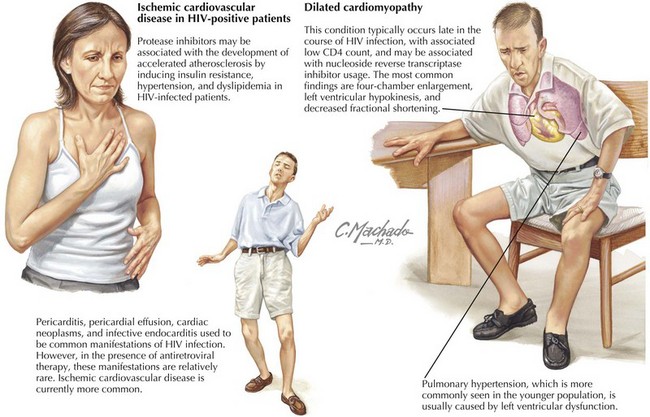66 HIV and the Heart
Human immunodeficiency virus (HIV) and acquired immunodeficiency syndrome (AIDS) affect more than 45 million people worldwide. AIDS—defined immunologically as a CD4 T-cell count of 200 cells/mm3 or less, or by the occurrence of an opportunistic illness—is the most advanced manifestation of HIV infection. The spectrum of disease is diverse, and the period between HIV acquisition and the development of AIDS can be many years. The prognosis for HIV-infected individuals who have access to antiretroviral therapy (ART) has greatly improved. The long-term management has therefore evolved to focus on traditional age-related illnesses, especially cardiovascular disease (CVD). Formerly common cardiac manifestations of HIV, including dilated cardiomyopathy, myocarditis, pericardial disease, and pulmonary hypertension, are now relatively rare in individuals receiving ART. Complications from ART such as dyslipidemia are now common. As a result of ART and increased longevity, HIV-infected individuals are at risk for CVD. HIV infection itself may increase the risk for CVD, and this risk may increase with decreasing levels of immune function. This chapter explores the most common cardiac diseases in HIV-infected individuals and the ways in which the etiologies of these diseases differ compared with the general population (Fig. 66-1). Whichever cardiac disease is being addressed, care should be integrated among the cardiologist, the HIV care provider, and the primary care provider. Special considerations in evaluating CVD risk and treating lipid abnormalities are also discussed.




